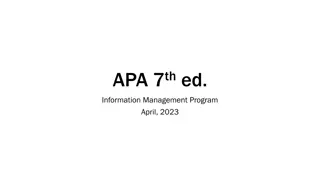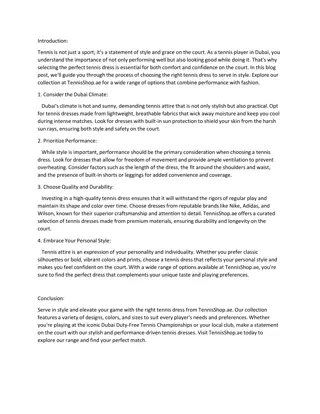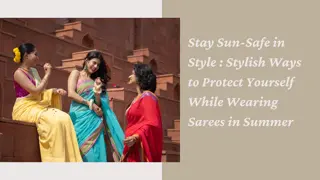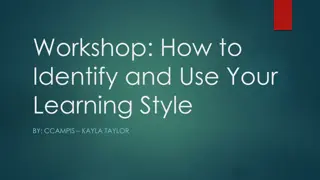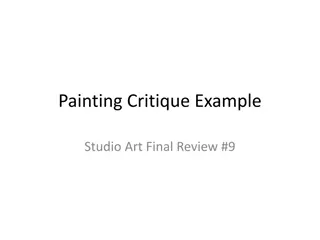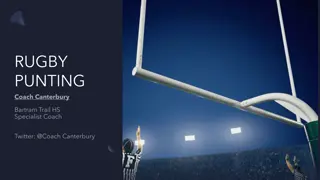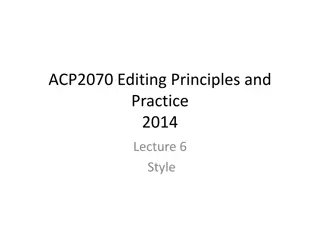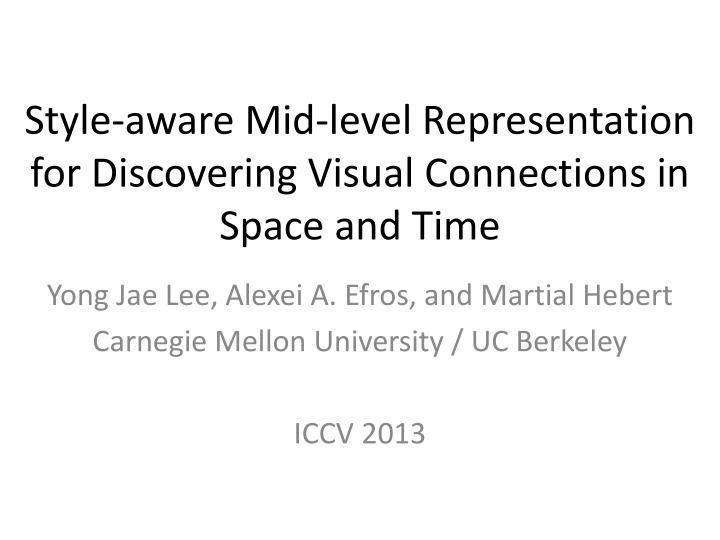
Discovering Visual Connections in Space and Time through Style-Aware Representations
Explore the research on style-aware mid-level representation for uncovering visual connections in space and time. The study delves into the historical aspects of data mining, dating back to 1972, and the geographical context in locations like Krakow, Poland. Discover the importance of visual data mining in computer vision and the evolution of mining specific visual patterns. The goal is to mine mid-level visual elements in temporally- and spatially-varying data while modeling their visual style.
Download Presentation

Please find below an Image/Link to download the presentation.
The content on the website is provided AS IS for your information and personal use only. It may not be sold, licensed, or shared on other websites without obtaining consent from the author. If you encounter any issues during the download, it is possible that the publisher has removed the file from their server.
You are allowed to download the files provided on this website for personal or commercial use, subject to the condition that they are used lawfully. All files are the property of their respective owners.
The content on the website is provided AS IS for your information and personal use only. It may not be sold, licensed, or shared on other websites without obtaining consent from the author.
E N D
Presentation Transcript
Style-aware Mid-level Representation for Discovering Visual Connections in Space and Time Yong Jae Lee, Alexei A. Efros, and Martial Hebert Carnegie Mellon University / UC Berkeley ICCV 2013
Long before the age of data mining when? (historical dating) where? (botany, geography)
when? 1972
where? Krakow, Poland Church of Peter & Paul The View From Your Window challenge
Visual data mining in Computer Vision Low-level visual words [Sivic & Zisserman 2003, Laptev & Lindeberg 2003, Czurka et al. 2004, ] Visual world Object category discovery [Sivic et al. 2005, Grauman & Darrell 2006, Russell et al. 2006, Lee & Grauman 2010, Payet & Todorovic, 2010, Faktor & Irani 2012, Kang et al. 2012, ] Most approaches mine globally consistent patterns
Visual data mining in Computer Vision Paris Paris non-Paris Prague Visual world Mid-level visual elements [Doersch et al. 2012, Endres et al. 2013, Juneja et al. 2013, Fouhey et al. 2013, Doersch et al. 2013] Recent methods discover specific visual patterns
Problem Much in our visual world undergoes a gradual change Temporal: 1887-1900 1900-1941 1941-1969 1958-1969 1969-1987
Much in our visual world undergoes a gradual change Spatial:
Our Goal Mine mid-level visual elements in temporally- and spatially-varying data and model their visual style 2000 year 1920 1940 1960 1980 when? where? Historical dating of cars Geolocalization of StreetView images [Kim et al. 2010, Fu et al. 2010, Palermo et al. 2012] [Cristani et al. 2008, Hays & Efros 2008, Knopp et al. 2010, Chen & Grauman. 2011, Schindler et al. 2012]
Key Idea 1) Establish connections 1926 1947 1975 closed-world 1926 1947 1975 2) Model style-specific differences
Mining style-sensitive elements Sample patches and compute nearest neighbors [Dalal & Triggs 2005, HOG]
Mining style-sensitive elements Patch Nearest neighbors
Mining style-sensitive elements Patch Nearest neighbors style-sensitive
Mining style-sensitive elements Patch Nearest neighbors style-insensitive
Mining style-sensitive elements Patch Nearest neighbors 1929 1927 1929 1923 1930 1937 1959 1957 1981 1972 1999 1947 1971 1938 1973 1946 1948 1940 1939 1949
Mining style-sensitive elements Patch Nearest neighbors tight 1929 1927 1929 1923 1930 uniform 1937 1959 1957 1981 1972 1999 1947 1971 1938 1973 1946 1948 1940 1939 1949
Mining style-sensitive elements 1966 1981 1969 1969 1930 1930 1930 1930 1973 1969 1987 1972 1924 1930 1930 1930 1970 1981 1998 1969 1930 1929 1931 1932 (a) Peaky (low-entropy) clusters
Mining style-sensitive elements 1932 1970 1991 1962 1939 1921 1948 1948 1937 1937 1982 1923 1963 1930 1956 1999 1933 1948 1983 1922 1995 1985 1962 1941 (b) Uniform (high-entropy) clusters
Making visual connections Take top-ranked clusters to build correspondences 1920s 1920s 1990s Dataset 1940s 1920s 1990s
Making visual connections Train a detector (HoG + linear SVM) [Singh et al. 2012] 1920s Natural world background dataset
Making visual connections 1920s 1930s 1940s 1950s 1960s 1970s 1980s 1990s Top detection per decade [Singh et al. 2012]
Making visual connections We expect style to change gradually 1920s 1930s 1940s Natural world background dataset
Making visual connections 1920s 1930s 1940s 1950s 1960s 1970s 1980s 1990s Top detection per decade
Making visual connections 1920s 1930s 1940s 1950s 1960s 1970s 1980s 1990s Top detection per decade
Making visual connections Initial model (1920s) Final model Initial model (1940s) Final model
Training style-aware regression models Regression model 1 Regression model 2 Support vector regressors with Gaussian kernels Input: HOG, output: date/geo-location
Training style-aware regression models detector regression output detector regression output Train image-level regression model using outputs of visual element detectors and regressors as features
Results: Date/Geo-location prediction Crawled from www.cardatabase.net Crawled from Google Street View 13,473 images Tagged with year 1920 1999 4,455 images Tagged with GPS coordinate N. Carolina to Georgia
Results: Date/Geo-location prediction Crawled from www.cardatabase.net Crawled from Google Street View Ours Doersch et al. ECCV, SIGGRAPH 2012 Spatial pyramid matching Dense SIFT bag-of-words Cars 8.56 (years) 9.72 11.81 15.39 Street View 77.66 (miles) 87.47 83.92 97.78 Mean Absolute Prediction Error
Results: Learned styles Average of top predictions per decade
Extra: Fine-grained recognition Mean classification accuracy on Caltech- UCSD Birds 2011 dataset Ours Zhang et al. CVPR 2012 Berg, Belhumeur CVPR 2013 41.01 28.18 56.89 Zhang et al. ICCV 2013 Chai et al. ICCV 2013 Gavves et al. ICCV 2013 weak-supervision strong-supervision 50.98 59.40 62.70
Conclusions Models visual style: appearance correlated with time/space First establish visual connections to create a closed-world, then focus on style-specific differences
Thank you! Code and data will be available at www.eecs.berkeley.edu/~yjlee22



